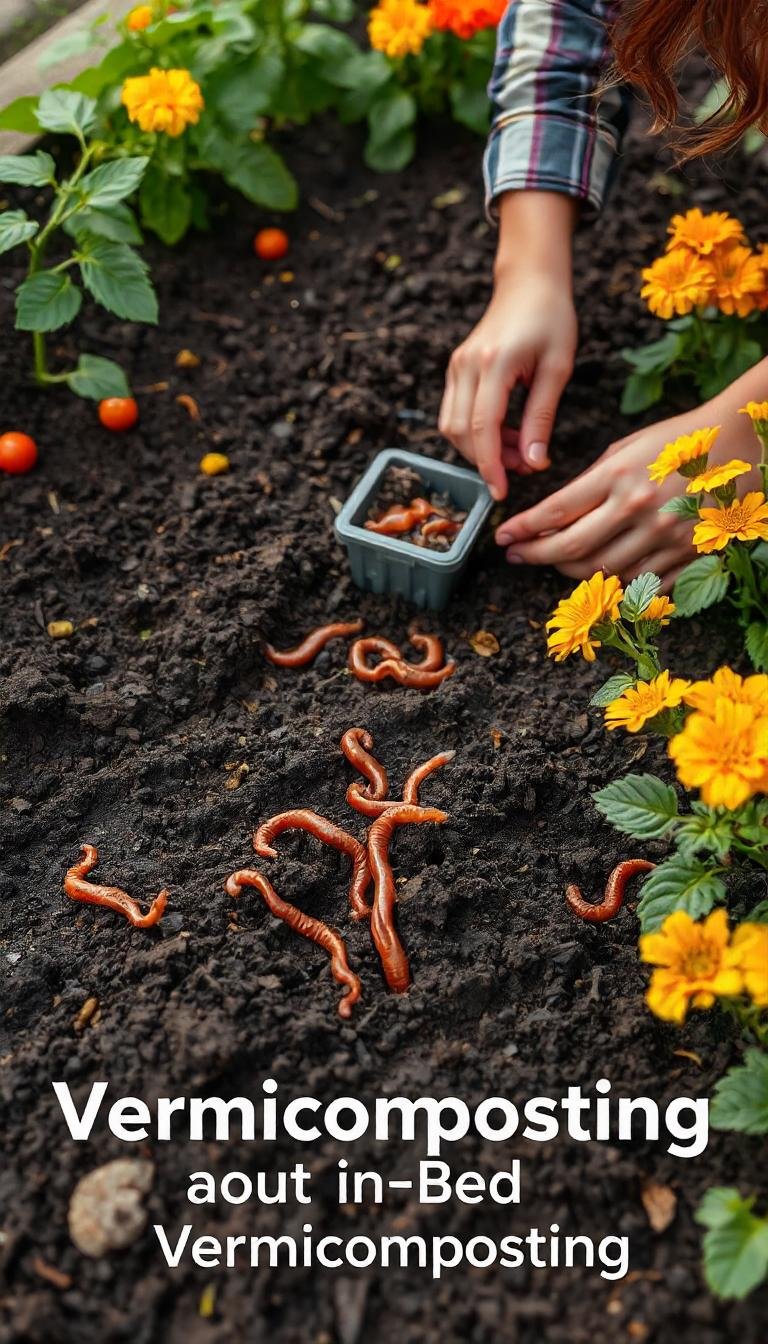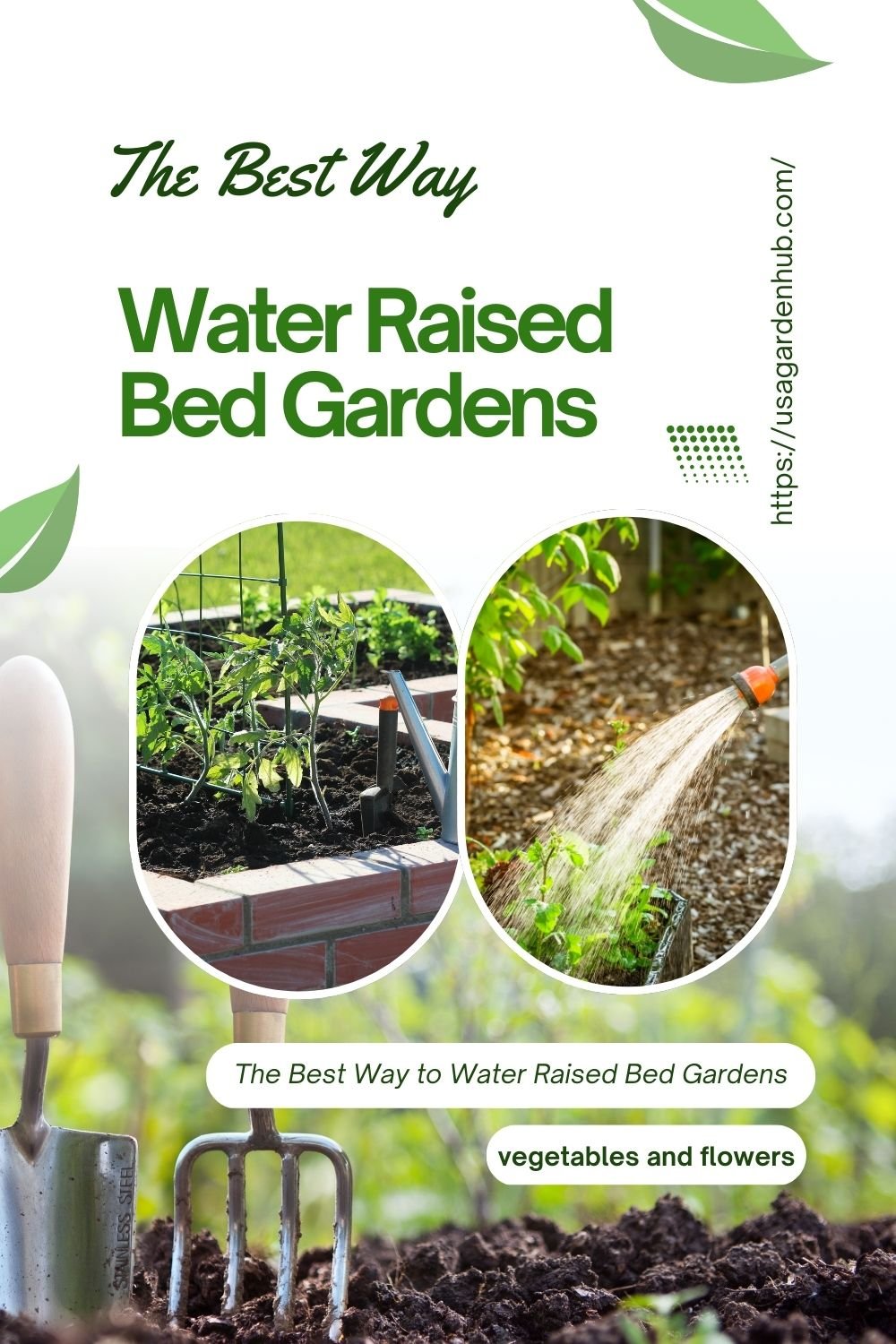Discover everything you need to know about in-bed vermicomposting with expert answers to frequently asked questions. Learn how to successfully compost with worms directly in your garden beds for healthier soil and plants.
In-bed vermicomposting is a method where earthworms are introduced directly into garden beds to break down organic matter, improve soil structure, and enhance nutrient availability for plants. This natural process eliminates the need for separate worm bins while enriching your garden soil continuously.
As a permaculture expert with over 15 years of experience in vermicomposting, I’m here to answer your most pressing questions about this beneficial gardening technique.
Common Questions and Expert Answers

1. What exactly is in-bed vermicomposting?
In-bed vermicomposting is the practice of adding composting worms directly to your garden beds, allowing them to process organic matter and create nutrient-rich castings right where your plants can use them.
This method differs from traditional vermicomposting in containers or bins by:
- Eliminating the need for separate composting systems
- Creating a more natural environment for the worms
- Providing continuous soil improvement
- Reducing the manual labor of transferring compost
2. Which worm species work best for in-bed vermicomposting?
The most effective worm species for garden beds are:
- Red Wigglers (Eisenia fetida)
- Excellent composters
- Adapt well to various conditions
- Reproduce quickly
- European Nightcrawlers (Eisenia hortensis)
- Larger, deeper-burrowing worms
- Tolerate temperature fluctuations better
- Great for improving soil structure
- Alabama Jumpers (Amynthus gracilus)
- Native to warmer climates
- Excellent for breaking up clay soil
- Cannot survive harsh winters
3. How do I start in-bed vermicomposting?
Follow these steps to begin:
- Prepare the bed
- Ensure good drainage
- Add 2-3 inches of organic matter
- Moisten the area thoroughly
- Introduce the worms
- Add 1-2 pounds of worms per square yard
- Release them in the evening
- Cover with moistened cardboard
- Maintain the environment
- Keep soil consistently moist
- Add fresh organic matter regularly
- Protect from extreme temperatures
4. What can I feed the worms in my garden beds?
Suitable materials include:
- Vegetable and fruit scraps
- Coffee grounds and tea bags
- Shredded paper and cardboard
- Grass clippings (in moderation)
- Fallen leaves
Avoid:
- Meat and dairy products
- Oily foods
- Citrus peels
- Onions and garlic
- Processed foods
5. How do I maintain proper moisture for the worms?
Maintaining proper moisture is crucial:
- Soil should feel like a wrung-out sponge
- Use mulch to retain moisture
- Water deeply but infrequently
- Consider drip irrigation for consistent moisture
Pro tip: Perform the squeeze test – grab a handful of soil and squeeze. If a few drops come out, the moisture level is perfect.
6. Will the worms damage my plants?
No, composting worms will not damage living plants. They:
- Feed only on decaying organic matter
- Actually benefit plants by:
- Improving soil structure
- Increasing nutrient availability
- Enhancing water retention
- Creating beneficial microbe-rich environments
7. How do I protect worms during extreme weather?
For hot weather:
- Apply thick mulch (4-6 inches)
- Water more frequently
- Provide shade if possible
For cold weather:
- Add extra organic matter in fall
- Apply thick layer of straw or leaves
- Consider row covers for extra protection
8. How long until I see results from in-bed vermicomposting?
Typical timeline for visible results:
- 2-4 weeks: Initial worm casting production
- 1-2 months: Noticeable soil texture improvement
- 3-4 months: Enhanced plant growth and health
- 6-12 months: Significant soil structure changes
9. Can I combine in-bed vermicomposting with other gardening methods?
Yes! In-bed vermicomposting works well with:
- No-till gardening
- Lasagna gardening
- Square foot gardening
- Hugelkultur
- Traditional row gardening
10. What are common problems and solutions?
| Problem | Solution |
| Worms leaving the bed | Check moisture levels and food supply |
| Decreased worm activity | Ensure proper temperature and adequate organic matter |
| Foul odors | Reduce feeding and add more carbon-rich materials |
| Pest invasion | Balance moisture and cover exposed food scraps |
Additional Tips for Success
- Start small
- Begin with one bed
- Expand as you gain experience
- Monitor regularly
- Check moisture levels weekly
- Observe worm activity and adjust care as needed
- Keep records
- Track feeding schedule
- Note changes in soil quality and plant health
Troubleshooting Guide
Signs of a healthy system:
- Earthy smell
- Visible worm activity
- Improving soil structure
- Healthy plant growth
Warning signs:
- Foul odors
- Worms trying to escape
- Waterlogged soil
- Pest infestations
Seasonal Considerations
Spring
- Gradually increase feeding as soil warms
- Monitor moisture as temperatures rise
- Add fresh organic matter
Summer
- Maintain consistent moisture
- Provide shade if needed
- Continue regular feeding
Fall
- Increase organic matter for winter preparation
- Consider adding protective mulch layer
- Reduce watering as temperatures cool
Winter
- Minimize disturbance
- Rely on stored organic matter
- Protect beds from extreme cold
Remember, successful in-bed vermicomposting is about creating and maintaining a balanced ecosystem. With patience and attention, you’ll develop a thriving worm population that continuously enriches your garden soil!
For more gardening tips and plant care guides, visit usagardenhub.com





2 Comments on “Frequently Asked Questions About In-Bed Vermicomposting”